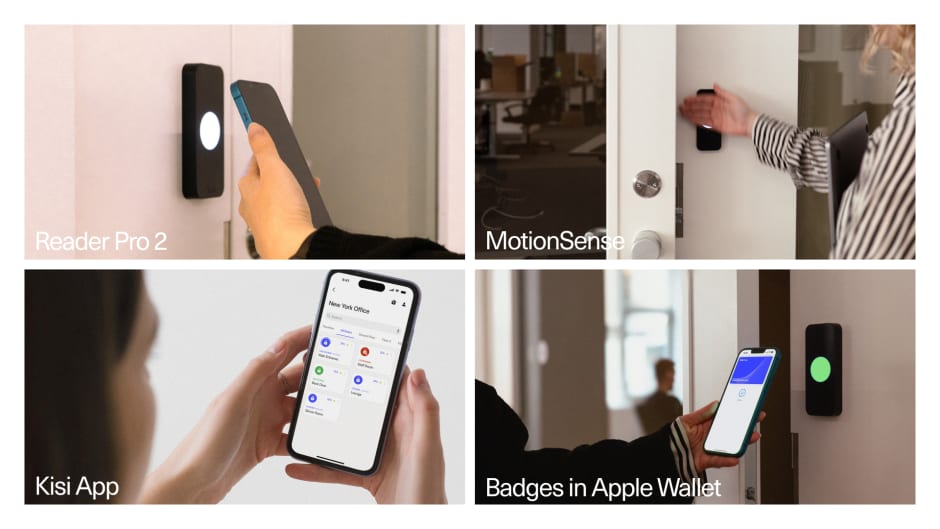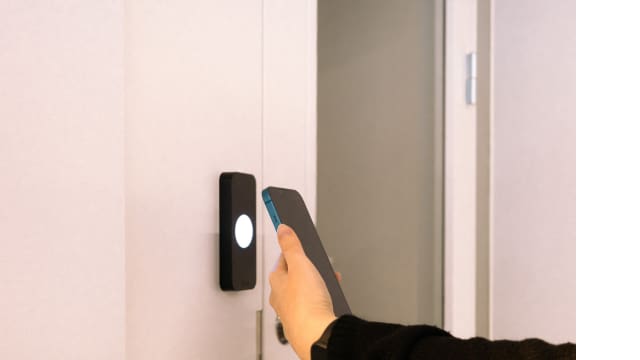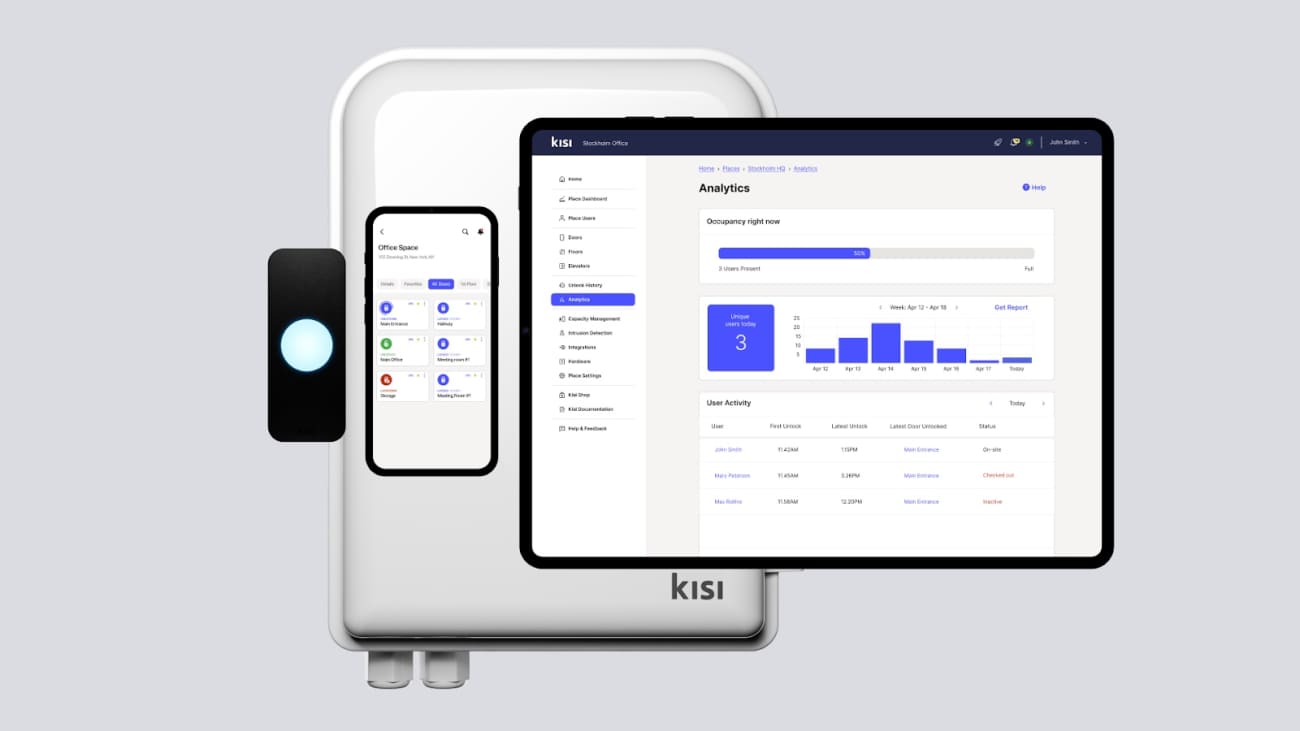Office break-ins are a frightening prospect because the stakes are so high—an intruder could hurt your employees, damage or destroy your assets, or steal confidential information. In 2022, the United States saw more than 40,000 burglaries in commercial and office buildings. Businesses that don’t want to become part of that statistic have to take their security seriously and find solutions that will offer reliable protection.
An office door entry system is the heart of your security efforts. Many companies already have these systems in place, but they’re often outdated. Even worse, some organizations don’t realize that there are more up-to-date and effective solutions available that could significantly decrease their risk levels, enhance their security and comfort, and streamline their operations.
In this article, you’ll learn why office door entry systems are so crucial to today’s businesses, how they can contribute to improved overall performance, and what you should look for when selecting a system.
What is an office door entry system? #
An office door entry system is a security solution that allows you to control who enters your office or specific areas within it. It’s an important measure that helps safeguard your employees, property, and data.
How it works #
Office door entry systems require employees, guests, clients, and other visitors to present credentials to unlock doors and enter your premises. It typically includes a reader that scans or detects those credentials and sends them to the controller that checks them against the information stored in a database. If it confirms that the person is authorized to enter, the controller will trigger the door to unlock. On the other hand, if the user is not authorized to open that particular door or isn’t included in the database at all, the door will remain closed.

Types of office door entry systems #
Many businesses have moved on from the lock and key systems they relied on for so long. Instead, they’re embracing commercial keyless entry systems and door locks that allow for greater flexibility and ease of use.
These are some of the different kinds of keyless office door entry systems available today:
- Keypads: With a keypad system, users have to enter a code to unlock the door. These systems are less secure than some other options because number codes are easy to share or steal.
- Key card and fob systems: Cards and fobs are two of the most popular access methods for offices because they’re convenient and easy to carry. Some of these systems require you to hold the card or fob up to a reader, while other proximity systems can detect a user’s credentials from longer distances.
- Mobile access systems: Many modern office door entry systems allow phones as authorization credentials. Users can unlock with an app, tap their phone against the reader, or unlock with a wave if their phone is in close proximity.
- Biometric systems: Biometric office door entry systems base access decisions on a person’s physical characteristics rather than a card, fob, mobile, or key. Users can scan their face, fingerprint, or other feature to automatically gain entry without presenting a physical or digital credential.
- Video intercoms: These systems include video cameras, which allow users to speak to employees or security staff on site and request access. Video intercoms are often integrated with other types of access control.
Keep in mind that you aren’t necessarily limited to a single type of door entry system. Organizations often select flexible access control solutions that allow for a variety of credentials. Kisi’s access control system, for instance, makes it easy for businesses to use key cards, fobs, QR codes, or mobile access with a single reader.

Common challenges in office access control #
Before we dig into the ways that an office door entry system can enhance your business, let’s first look at some of the hurdles you might encounter when selecting and implementing it. While every organization will face its own set of challenges, these are some of the most likely issues:
- Compatibility concerns: When implementing a new office door entry system, you might discover that it doesn’t integrate with your existing hardware, software, and other systems. This can make it difficult and more expensive to upgrade or replace your current door entry solution. Choosing an open, interoperable system like Kisi and researching the possible integrations beforehand should ease these concerns.
- Managing on-site controls: Some door entry systems can only be managed while on-site at your office. This means you will always need someone present to issue or change authorizations, unlock doors for visitors, and monitor for attempted security incidents. Cloud-based systems, on the other hand, enable you to manage all spaces remotely from a single pane of glass.
- Resistance to change: Your employees might be reluctant to adopt a new approach to access control, especially if they’re comfortable using another system. Choosing the more convenient mobile entry system that ensures users don’t forget or lose their credentials and offering training and guidance can help them overcome these anxieties.
- Outage worries: If the power or internet goes out at your office, you don’t want to worry that your employees will be stranded outside, unable to scan their credentials and unlock the door. Systems like Kisi have built-in protections against these scenarios, keeping doors functional even after the power or internet goes off.
All these are valid concerns, and you should always consider your business needs. But keep in mind that modern systems, like Kisi, address or mitigate these problems.

Enjoying the benefits of door entry systems #
Office door entry systems help you create a safer, more positive workplace environment. The question then becomes, are those gains worth the money and effort? These upsides to access control can help clarify why so many businesses are investing in access control.
Improving security #
The primary goal of a door entry system is to better protect your office against intruders and potential threats. The presence of an effective system can prevent break-ins and deter criminal activity, such as vandalism and theft. Solutions like Kisi also include alerts you can receive on your phone, so you’re always aware of what’s happening at your business.
Cutting costs #
An office door entry solution is generally less expensive to maintain over time than traditional keys and locks. You don’t have to replace lost keys, change the locks because of missing keys, or maintain a detailed key tracking system. This kind of solution can also reduce operational overhead and save money in terms of staffing because you no longer need constant security coverage on-site.
Making access convenient #
Keeping up with keys, opening doors for visitors, and juggling your belongings while trying to use a key are daily challenges businesses no longer have to accept. With a flexible door entry system, you can choose the credentials that work best for your organization and employees. That translates to easy entries for users, simplified visitor management, and streamlined management for your company and its security team.
Gathering data #
An access control system like Kisi not only manages your door entries but also tracks important information. For example, you can see what times employees enter, which spaces they use most often, and how many people are on-site at any given time. This information can guide your decision-making regarding issues like space utilization, hybrid work, and staffing.
Managing access remotely #
You can manage all aspects of your access control from a distance using a cloud-based door entry system. Kisi’s access dashboard, for instance, allows you to change authorizations, grant temporary access to visitors, and receive alerts of suspicious activity even when you’re away from the office.
Increasing productivity and morale #
When employees see that you value their safety, convenience, and well-being, their performance and mood usually improve. In addition, workers can get more done when they aren’t disrupted by opening doors for guests or finding themselves unable to get into the office because they forgot their keys.
How to choose a door entry system for your office #
The door access control industry has flourished in recent years, reaching a market size of $7.3 billion in 2022. Sorting through all the available solutions will feel less overwhelming if you know exactly what to look for.
Characteristics to consider #
Researching and comparing these factors can give you a better understanding of what sets each office door entry system apart from the next:
- Integrations: To create a seamless security system, find a door entry solution that can integrate with what you already have in place. If a native integration isn’t possible, research whether they offer an open API.
- Deployment options: If you already have a system in place, migrating to a more modern one can require significant resources. Look for a system that offers various deployment options that take your current setup into consideration and allow phased migration.
- Scalability: Your access control needs are likely to change as your business grows. If you move to a new site, expand your space, or decide to secure additional doors, you need a scalable entry system that can adapt to those shifts.
- Credential types: If your business prefers to use a certain type of access credential, verify that your office door entry system will allow for it. Some solutions, including Kisi, let you select from a wide range of methods, including mobile access, QR codes, employee badges in Apple Wallet, and traditional keycards.
- Premium features: A door entry system that goes beyond the basics can give you greater insight and oversight when it comes to your office access control. Look for a solution with robust capabilities, such as intruder alerts, offline support, and data analytics.
If you’re struggling to find an office door entry system that checks all of these boxes, prioritize the points most essential to you and your team.
Costs and ROI #
Price is a primary concern for most businesses planning to implement an office door entry solution. The cost of an access control system differs significantly based on the type of system you choose, how many doors you have, and what installation support you need. For example, a door reader and hardware costs, on average, between $600 and $1,200 per door. However, the expense could be significantly higher if you don’t have electronic locks in place or have to replace or upgrade existing infrastructure.
As you assess your budget, keep in mind that an effective office door entry system can ultimately save money. Because it can reduce your operational overhead, you can see a strong return on your investment (ROI) over time.

Installation and setup tips #
When installing an office door entry system, think carefully about where you’ll place any access points. Most companies prioritize primary entrances, but you might also secure restricted areas holding confidential data or office amenities that should be inaccessible to guests and visitors. Once that decision is made, you can move forward with your installation.
Installation and configuration #
Installing an office door entry system is relatively straightforward. It involves adding wiring, electric locks, controllers, and readers in the appropriate locations in your office. A professional installer generally takes care of this process for you, but—if you already have the infrastructure in place and you’re confident in your technical skills—you can install it on your own.
Once your system is in place, you can configure it to your preferences and needs. Some of the settings you might change include assigning doors, users, user groups, credentials, activating alerts, and choosing sensitivity levels.
Selecting a deployment option #
Depending on your office’s current door entry setup, your goal might be enhancement or a complete overhaul. To accommodate every organization’s needs, Kisi offers multiple deployment options.
For example, if you want to maintain your legacy hardware but move to cloud-based access control, Kisi can upgrade your system using your current infrastructure. Kisi can also overlay mobile or physical credentials with your existing solution. On the other hand, you might opt to fully replace your system with Kisi’s hardware and software to achieve unified, future-proof door access control.
Optimize your office security with Kisi #
Every office, big or small, should have a door entry system that provides enhanced security, streamlined management, and insights into access trends. A smart, reliable, and convenient access control system like Kisi is an ideal foundation for this type of system.
When you’re ready to learn more about Kisi and experience the benefits of an office door entry system, don’t hesitate to reach out with questions or request a demo.






